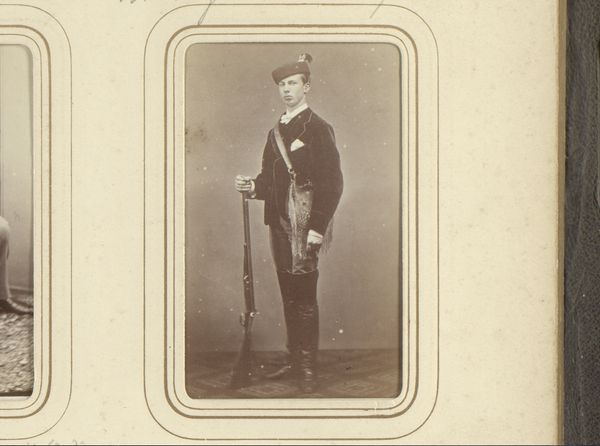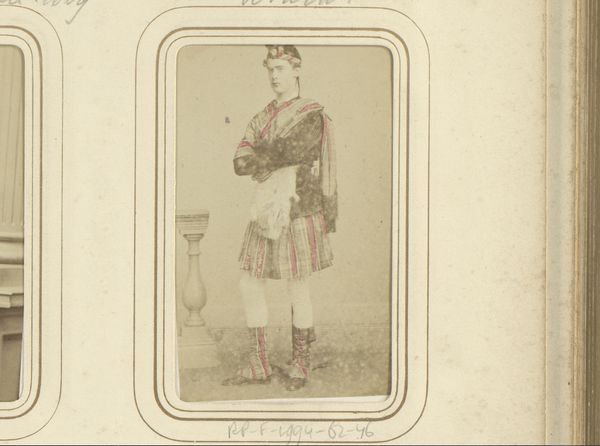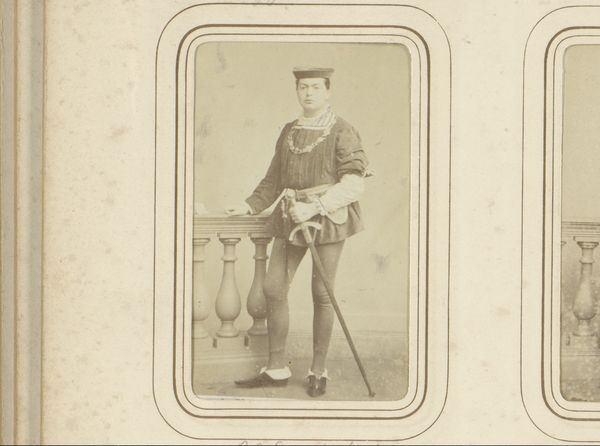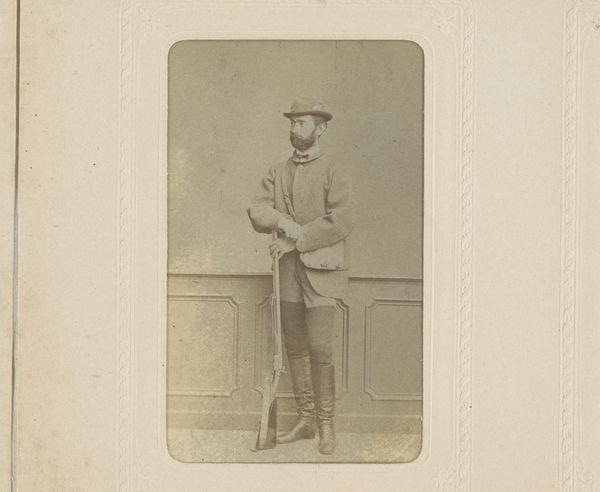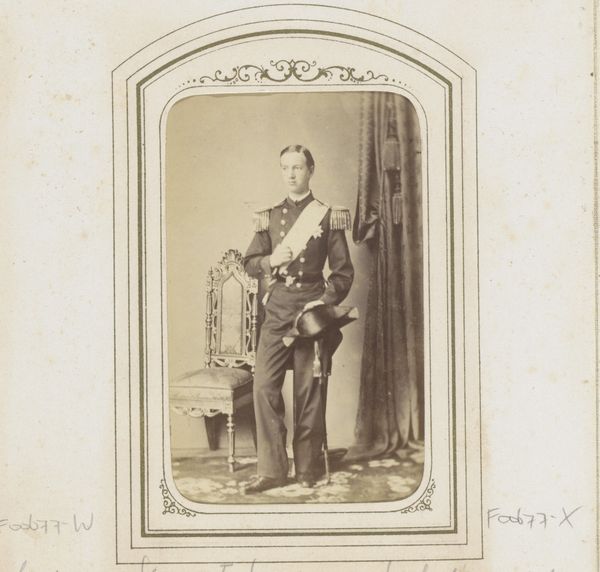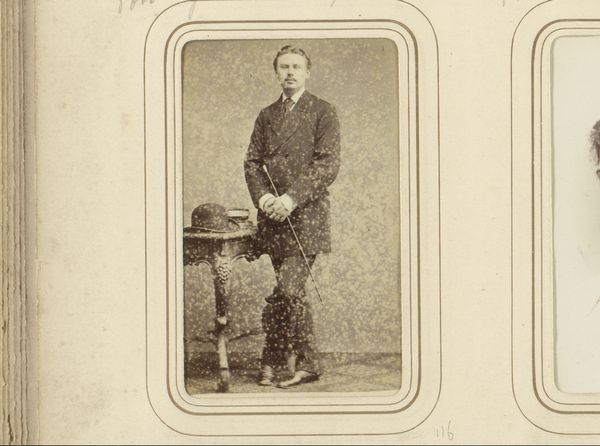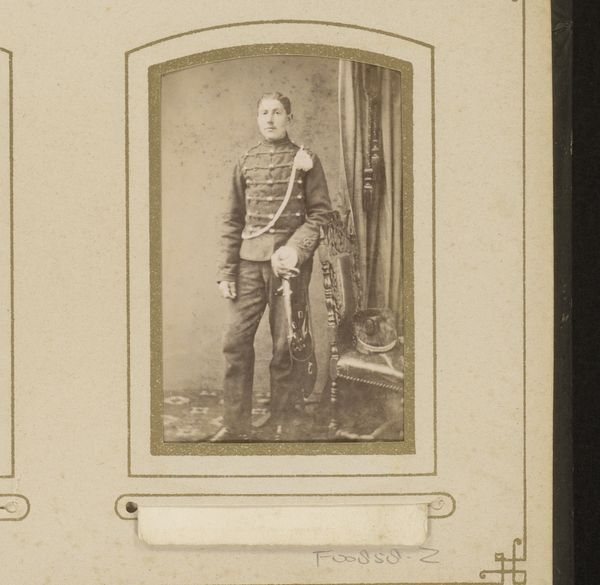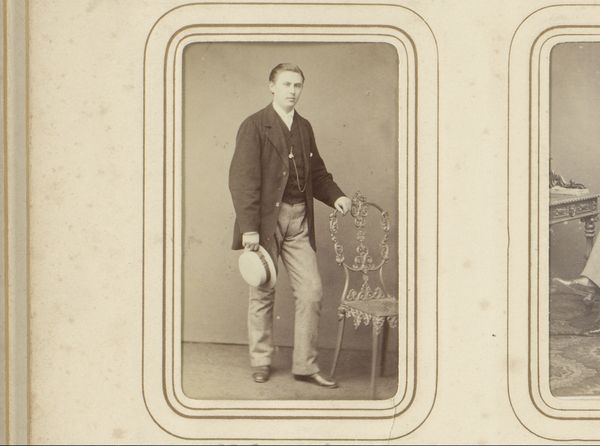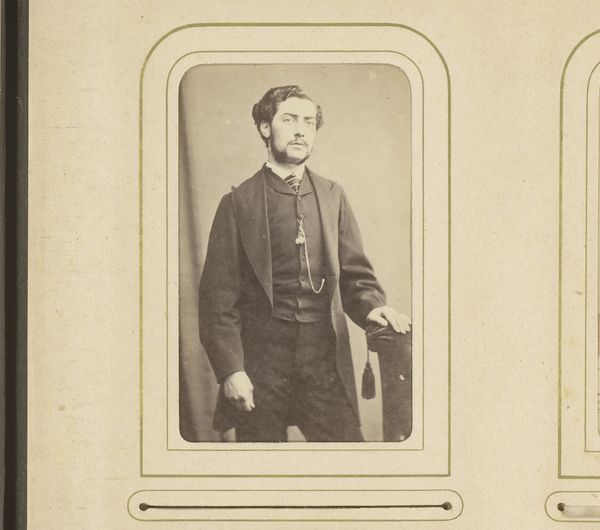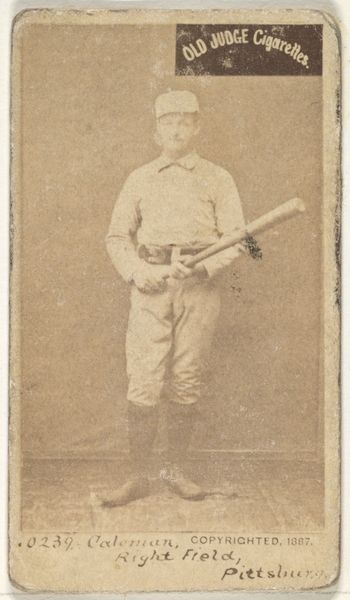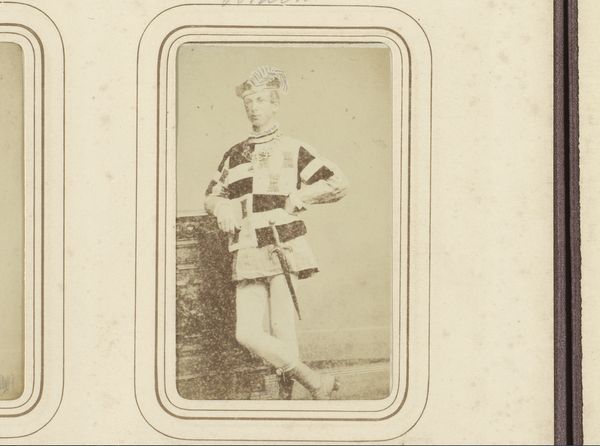
photography
#
portrait
#
figuration
#
photography
#
19th century
#
academic-art
Dimensions: height 84 mm, width 51 mm
Copyright: Rijks Museum: Open Domain
This portrait of a young man in costume was made by Henri Pronk in the Netherlands, using early photographic methods. The image presents us with a peculiar set of social codes. The young man’s theatrical costume, complete with sword, suggests a staged performance or tableau vivant. In the 19th century, such displays were popular forms of entertainment among the upper classes, often referencing historical or literary themes. The inclusion of a classical column fragment indicates a cultivated, educated subject, familiar with art history and performance culture. Consider the social conditions that made such a portrait possible. Photography was still a relatively new technology, and portraiture was a status symbol. The subject's carefully constructed image reflects the values and aspirations of a specific social class, one that had the leisure and means to engage in artistic pursuits. To understand this photograph fully, we might research the history of theatrical performance in the Netherlands, the rise of photography as a social practice, and the socio-economic context of the sitter. Art gains its full meaning when we connect it to the social and institutional conditions of its making.
Comments
No comments
Be the first to comment and join the conversation on the ultimate creative platform.
